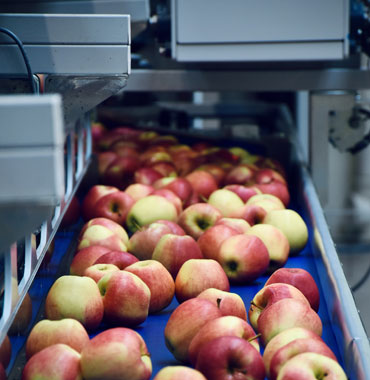Food safety concerns are coming under increasing scrutiny among both regulators and the general public. To protect consumers as well as their business’ reputations, restaurants must do all they can to address potential risks. Fortunately, there are several new technologies that can help retail food establishments improve and monitor their food safety protocols. Following are five of the most effective and easiest to implement advances.
1. Monitoring Ingredient Quality
One of the key technology-based advances in food safety are Internet of Things (IoT)-based sensors that can track temperature changes in refrigerators, warm storage or other areas in real time to ensure food stays out of danger zones. If temperatures fluctuate too much, these sensors can warn employees so they can respond swiftly to prevent spoilage and microbial growth.
The same technology can help ensure ingredient quality in transit, too. IoT solutions can track temperature and spoilage-indicating nanoparticles in shipping, giving drivers and other stakeholders real-time updates to inform any necessary changes, such as delivering to a closer store before goods spoil.
2. Tracking Safety Procedure Compliance
Restaurants can also use technology to ensure employees meet food safety regulations. Many issues arise from unsanitary work practices, and conventional compliance-monitoring measures are inefficient and leave room for error. Digital technologies offer a solution.
Digital checklists make it easier to record compliance with daily food safety protocols. Their ease of use encourages participation, and employees who use these lists are less likely to overlook parts of the routine. Moving to digital instead of paper records also improves traceability, reduces the danger of missing documents and documents who was in charge if something wasn’t completed.
Restaurants with particularly critical safety concerns can go a step further by placing hand-scanning devices near sinks and workstations. These devices can detect potential pathogens on employees’ hands, indicating if they need to wash more thoroughly. Similar systems can also monitor body heat to suggest if an employee is ill.
3. Verifying Cleanliness
Other technologies that can help verify the efficacy of a restaurant’s food safety protocols include adenosine triphosphate (ATP) tests. These testing devices detect ATP, the energy unit found in all living cells, to reveal microbial contamination. Restaurants that regularly use these tests on surfaces throughout the kitchen and dining room can discover problem areas where cleaning practices are insufficient, or confirm that their current cleaning and sanitizing methods are working.
4. Minimizing Touchpoints
Cross-contamination is one of the most common risks in restaurants, and the presence of many high-touch surfaces exacerbates these concerns. Using touch-free alternatives to high-touch devices helps minimize the risk of cross-contamination.
Touch-free faucets and paper towel dispensers are perhaps the most recognizable examples of these technologies. However, restaurants don’t have to stop there. Automatic soap dispensers, touchless payment systems, hands-free condiment dispensers and automatic lights are available today and help reduce the number of high-touch surfaces.
Touch-free technology doesn’t negate the need for regular hand-washing and glove-changing, but it mitigates risks if employees fail to comply with standards. These systems are also typically more efficient than manual alternatives, so they can boost productivity.
5. Improving Traceability
Surveys suggest that just 6% of all firms have full visibility into their supply chains, making it difficult for restaurants to know exactly where things come from and how they get there. This makes tracing foodborne illnesses challenging, but new technologies can help.
IoT tracking and blockchain platforms provide more visibility, including real-time insights into shipment locations and quality. These digital records make it easier to go back after a safety incident to see where the problem originated. Restaurants can then accurately determine what to change to prevent similar issues in the future.
Restaurants that want to succeed must embrace food safety. Doing that effectively means capitalizing on new technologies to simplify processes, improve visibility and minimize risks.





